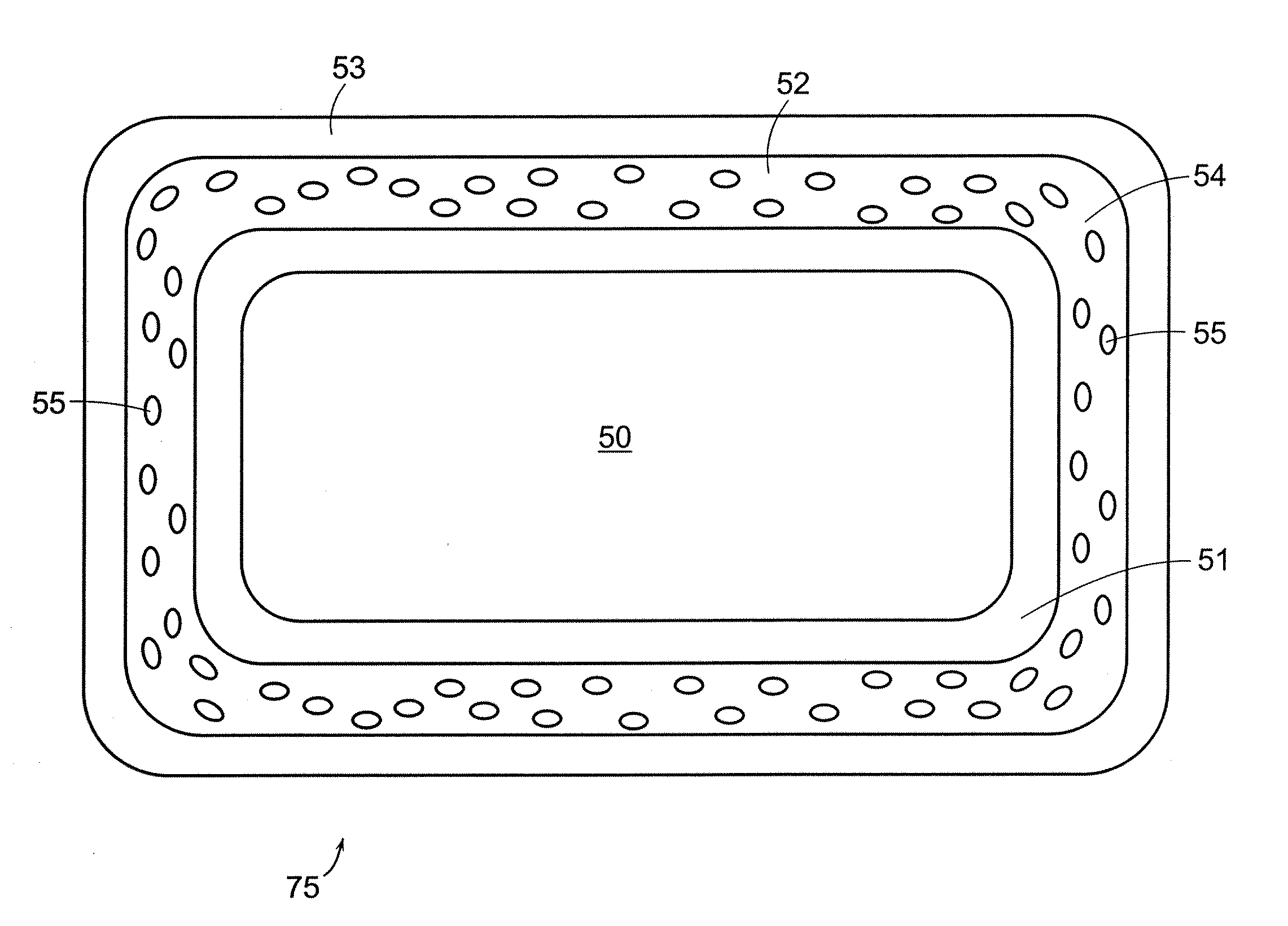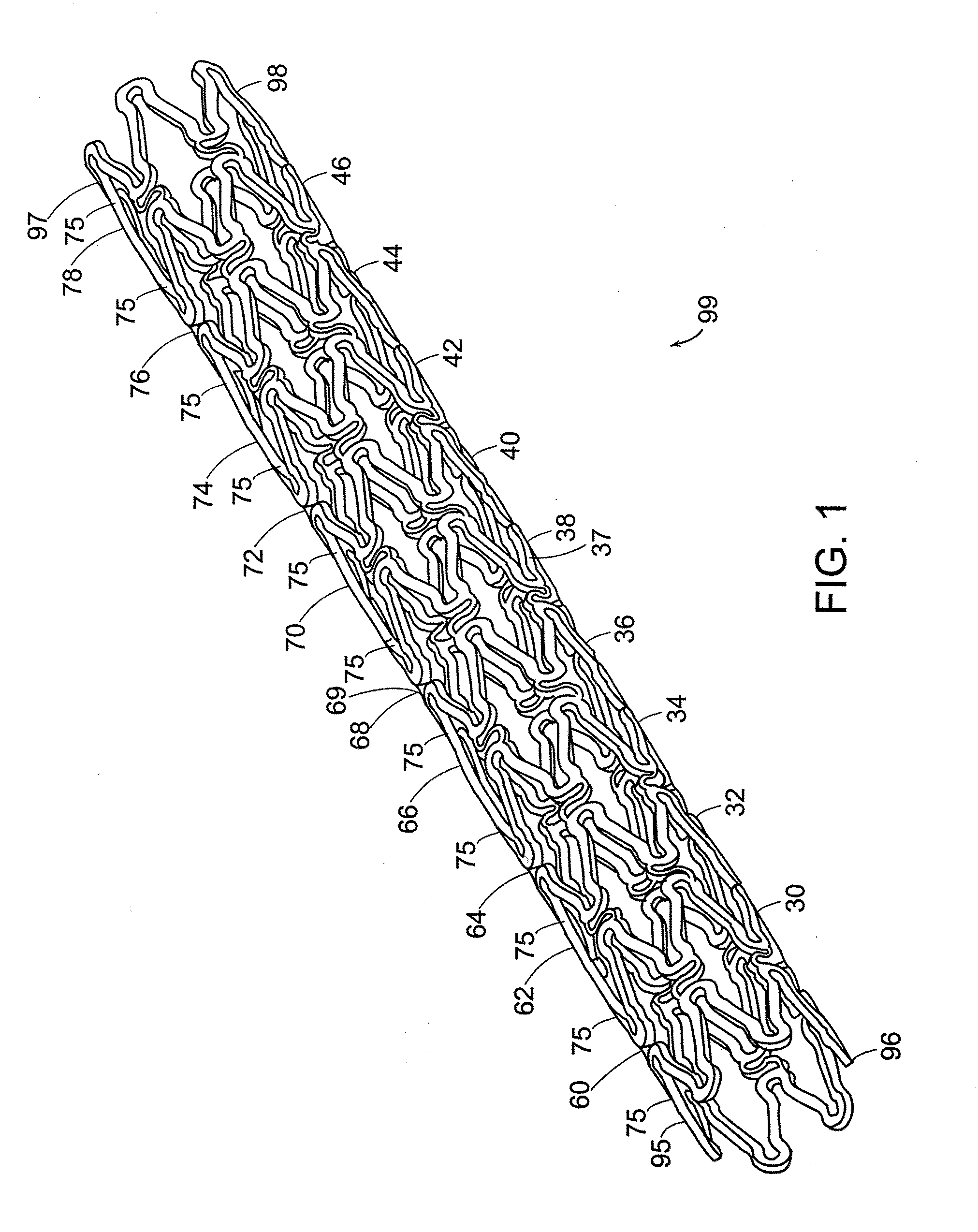Apparatus and method for delivery of mitomycin through an eluting biocompatible implantable medical device
a biocompatible, mitomycin technology, applied in the field of medical devices, can solve the problems of high restraint rate of ptca limit, limited chudzik et al. device, and increased potential for recurrence of blockag
- Summary
- Abstract
- Description
- Claims
- Application Information
AI Technical Summary
Benefits of technology
Problems solved by technology
Method used
Image
Examples
Embodiment Construction
[0053]An apparatus for a biocompatible implantable medical device comprising a biocompatible drug release matrix is illustrated generally at 99 in FIG. 1. In a preferred embodiment of the present invention, the biocompatible implantable medical device 99 is a stent. The present invention can be used with stents known in the art including, but not limited to, the stents described in Assignee's co-pending patent applications Ser. No. 09 / 624,812 and Ser. No. 10 / 410,950, the entirety of these applications are hereby incorporated herein by reference. In another embodiment of the present invention, the biocompatible implantable medical device 99 is a catheter, a vascular prosthesis, an intravenous canule or a similar device. The biocompatible implantable medical device 99 has a tubular body comprising a plurality of circumferential bands 37 and a plurality of circumferential row of links 69 that engage the plurality of circumferential bands 37. A circumferential row of links engages adjac...
PUM
| Property | Measurement | Unit |
|---|---|---|
| concentrations | aaaaa | aaaaa |
| time period | aaaaa | aaaaa |
| thick | aaaaa | aaaaa |
Abstract
Description
Claims
Application Information
 Login to View More
Login to View More - R&D
- Intellectual Property
- Life Sciences
- Materials
- Tech Scout
- Unparalleled Data Quality
- Higher Quality Content
- 60% Fewer Hallucinations
Browse by: Latest US Patents, China's latest patents, Technical Efficacy Thesaurus, Application Domain, Technology Topic, Popular Technical Reports.
© 2025 PatSnap. All rights reserved.Legal|Privacy policy|Modern Slavery Act Transparency Statement|Sitemap|About US| Contact US: help@patsnap.com



